Plenary speakers
Contents
Professor Jeremy Kilpatrick
Plenary Speech at 2014 International Conference on Mathematics Textbook Research and Development (ICMT2014)
10:30-11:30; 29 July 2014
From Clay Tablet to Computer Tablet:
The Evolution of School Mathematics Textbooks
Professor Jeremy Kilpatrick
The University of Georgia, USA
Abstract
Over the centuries and around the world, school mathematics textbooks have differed in many ways, including variations in form, function, content, and approach. In this idiosyncratic survey, I attempt to portray, across time and space, what researchers have learned about those textbooks: what they are, what they appear to be, how they are related, and how they have been used.
In general, school mathematics textbooks have differed much more in form and approach than in function or content. Their principal function has been to serve as repositories of authorized knowledge, although at times they have been enlisted as resources for creative problem solving or as material for self-instruction. The earliest textbooks in the Babylonian scribal schools, for example, were collections of arithmetic tables or of problems, most of which involved finding a number that satisfied given conditions. The problem collections varied in approach: Sometimes the solution was given, and sometimes the text outlined the procedure to be followed in reaching that solution. They were clearly intended to be used in schools, and presumably a teacher was expected to explain the procedure and set the assignment. Today’s textbooks vary in a similar fashion but along many more dimensions. It appears that textbooks are being written as much or more for the teacher as they are for the learner.
As textbooks took different forms and appeared in different media—clay tablet, papyrus, parchment, bamboo, paper—they also began to take on a wider span of mathematical content and to vary extensively in pedagogical approach: from providing no suggestions at all to including detailed scripts specifying what the teacher should say and do. Research on textbooks has examined many of their characteristics, looking at how they have changed over time and, less often, how they differ across communities.
Today, school mathematics textbooks seem more similar in mathematical content than they are in appearance, pedagogical outlook, or assistance for the teacher. There does seem to be something of a virtual school mathematics curriculum worldwide, whereas there is little agreement on what features the textbooks enshrining that curriculum should have. Tomorrow, computing technology seems likely not only to yield tailor-made textbooks but also to allow authors and publishers to revise the text swiftly in light of how the learner responds.
Bio sketch
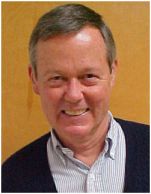 Jeremy Kilpatrick is Regents Professor of Mathematics Education at the University of Georgia. He holds A.B.and M.A.degrees from the University of California,Berkeley, and M.S. and Ph.D. degrees from Stanford University. Before joining the faculty at Georgia in 1975, he taught at Teachers College, Columbia University. He has taught courses in mathematics education at several European and Latin American universities and has received Fulbright awards for work in New Zealand, Spain, Colombia, and Sweden. He holds an honorary doctorate from the University of Gothenburg and is a Fellow of the American Educational Research Association, a National Associate of the U.S. National Academy of Sciences, and a member of the U.S. National Academy of Education.He received a 2003 Lifetime Achievement Award from the National Council of Teachers of Mathematics and the 2007 Felix Klein Medal honoring lifetime achievement in mathematics education from the International Commission on Mathematical Instruction. His research interests include teachers’ proficiency in teaching mathematics, mathematics curriculum change and its history, assessment, and the history of research in mathematics education.
Jeremy Kilpatrick is Regents Professor of Mathematics Education at the University of Georgia. He holds A.B.and M.A.degrees from the University of California,Berkeley, and M.S. and Ph.D. degrees from Stanford University. Before joining the faculty at Georgia in 1975, he taught at Teachers College, Columbia University. He has taught courses in mathematics education at several European and Latin American universities and has received Fulbright awards for work in New Zealand, Spain, Colombia, and Sweden. He holds an honorary doctorate from the University of Gothenburg and is a Fellow of the American Educational Research Association, a National Associate of the U.S. National Academy of Sciences, and a member of the U.S. National Academy of Education.He received a 2003 Lifetime Achievement Award from the National Council of Teachers of Mathematics and the 2007 Felix Klein Medal honoring lifetime achievement in mathematics education from the International Commission on Mathematical Instruction. His research interests include teachers’ proficiency in teaching mathematics, mathematics curriculum change and its history, assessment, and the history of research in mathematics education.
Kilpatrick’s edited publications include A Research Companion to Principles and Standards for School Mathematics (with W.Gary Martin and Deborah Schifter) and A History of School Mathematics (with George Stanic), both published in 2003. He also co-edited the three editions of the International Handbook of Mathematics Education published in 1996, 2003, and 2013. He chaired the Committee on Mathematics Learning of the National Research Council, whose report Adding It Up: Helping Children Learn Mathematics was published by the National Academies Press in 2001. He also served on the RAND Mathematics Study Panel, whose report Mathematical Proficiency for All Students: Toward a Strategic Research and Development Program in Mathematics Education, published by the RAND Corporation, appeared in 2002. Both reports addressed the development of proficiency in teaching mathematics by improving teachers’ knowledge, skill, and practice. Strengthening the professional education of mathematics teachers was the aim of the NSF-funded Center for Proficiency in Teaching Mathematics (2002−2007) in which he served as a principal investigator.
Professor Michal Yerushalmy
Plenary Speech for 2014 International Conference on Mathematics Textbook Research and Development (ICMT2014)
9:00-10:00; 30 July 2014
More than a reminder of the past?
Challenges to the Authoritarian Roles of Textbooks
Professor Michal Yerushalmy
The University of Haifa, Israel
Abstract
A textbook is a special type of book that is part of institutionalized schooling, usually used in a particular way. Kuhn (1962) considers textbooks to present accumulation of knowledge rather than promoting shifts of paradigms. Digital books offer new kinds of flexibility, participation, and personalization – properties that are in contrast to the traditionally authoritative structure of the textbook and the passiveness of the reader (the teacher or the student). Current proposed pedagogical changes, especially those directly touching upon inquiry teaching and learning from open educational resources that advocate community writing—and that seem to be the appropriate ones to support constructivist pedagogies—challenge the accepted and still dominant functions of the textbook and textbook culture. To study the implications of the proposed affordances of interactive textbooks, we will review the accepted norms of textbook authority in mathematics classrooms and address the challenges interactive eTextbook post to the foundational ideas of textbooks: authority and stability.
Two concerns that should be part of any involvement with eTextbooks will be in focus; one is the non-sequential manner of evolving digital collections and the second is the effect of interactive multimodality on the restructure of teaching resources. It is commonly believed that digital books enable changes of sequence and flexibility, but at the same time such flexibility may cause lack of clarity. For a collection of semi-ordered materials and multimodal digital “pages,” which to a certain extent stand on their own, to be considered a textbook, the deep structure of the concepts and the inter-relations between them must be simple and visible. Teaching in which a principal challenge is conceptual navigation demand a new kind of professional responsibilities. The challenge in constructing a task is to design opportunities for action. Interactive elements can be designed to support the systematic generation of examples in linked multiple representations, to accommodate various entry points, and to provide non-judgmental mirror feedback that should be interpreted subjectively. In this situation the main challenge is to rethink the sets of concepts and images used to guide us in thinking about the design of activity and to consider the consequences of design and structure to respond to subjective needs and to personalization by the user – primarily the teacher.
Considering possible consequences of the above mentioned changes, an interesting question remains whether the textbook will undergo a significant innovation to the point where the idea of a single document representing external authority will no longer be considered a foundational idea in teaching and learning.
Bio sketch
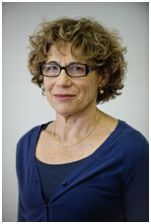 Michal Yerushalmy (B.Sc., & M.Sc. Technion, IL, Ed.D. Harvard University) is a Professor of Mathematics Education on the faculty of the mathematics education department in the faculty of Education. Yerushalmy is the director of the Institute of Research and Development of Alternative sin Education, a member of the Learning in Networked Society (LINKS) National Research Center and Vice President for Research of the University of Haifa. Her interests are in learning with computerized environments. Yerushalmy studies mathematical learning and teaching, focus on design and implementation of reformed curricula and on cognitive processes involved in learning with multiple external representations, bodily interactions and modeling. She authored and designed numerous software packages in geometry (The Geometric Supposer), algebra curriculum (the interactive “VisualMath” secondary school mathematics web curriculum) and studies learning of calculus in dynamic and multi-representation environments. Current projects focus on learning with interactive diagrams in interactive electronic books and on mLearning. In the Math4Mobile project Yerushalmy offers ways to make technology available for mathematical inquiry learning everywhere . Over the Past 25 years she has taught courses of didactic methods of mathematics and on cognitive and curricular implications of technology for education. Michal Yerushalmy received the 2010 ISDDE Prize for Excellence in Educational Design.
Michal Yerushalmy (B.Sc., & M.Sc. Technion, IL, Ed.D. Harvard University) is a Professor of Mathematics Education on the faculty of the mathematics education department in the faculty of Education. Yerushalmy is the director of the Institute of Research and Development of Alternative sin Education, a member of the Learning in Networked Society (LINKS) National Research Center and Vice President for Research of the University of Haifa. Her interests are in learning with computerized environments. Yerushalmy studies mathematical learning and teaching, focus on design and implementation of reformed curricula and on cognitive processes involved in learning with multiple external representations, bodily interactions and modeling. She authored and designed numerous software packages in geometry (The Geometric Supposer), algebra curriculum (the interactive “VisualMath” secondary school mathematics web curriculum) and studies learning of calculus in dynamic and multi-representation environments. Current projects focus on learning with interactive diagrams in interactive electronic books and on mLearning. In the Math4Mobile project Yerushalmy offers ways to make technology available for mathematical inquiry learning everywhere . Over the Past 25 years she has taught courses of didactic methods of mathematics and on cognitive and curricular implications of technology for education. Michal Yerushalmy received the 2010 ISDDE Prize for Excellence in Educational Design.
Professor Frederick Koon-Shing Leung 梁貫成教授
Plenary Speech for 2014 International Conference on Mathematics Textbook Research and Development (ICMT2014)
13:30-14:30; 31 July 2014
Messages conveyed in textbooks: A study of mathematics textbooks during the Cultural Revolution in China
Professor Frederick K.S. Leung
The University of Hong Kong, China
Abstract
Textbooks are an important source of potential learning (Mesa, 2004), but the potential differs among countries according to the different cultures and practices of the countries concerned. So it is essential for textbook studies to be situated within the cultural contexts in which the textbooks are produced and utilized, since “mathematics textbooks ….. (are) historically developed, culturally formed, produced for certain ends and used with particular intentions”(Rezat, 2006, 482). No textbooks have illustrated Rezat’s claim more vividly than the textbooks produced during the time of the Cultural Revolution in China.
The Great Proletarian Cultural Revolution, commonly known as the Cultural Revolution, was a social-political movement that took place in China roughly between 1966 and 1976. It was a time of great political and social turmoil, and its espoused goal was to remove capitalist as well as traditional cultural elements from the country in order to achieve an idealistic form of communism. As such it was explicit in articulating communist values and criticizing the capitalist and traditional Chinese cultural elements and values. One important arena for this revolution is education, and this arena provides an excellent opportunity for studying the interplay between the cultural context and educational goals, through examining the messages conveyed in the textbooks.
In this presentation, selected topics in the mathematics textbooks from the Cultural Revolution period in China are analysed and compared to the textbooks published in Hong Kong roughly at the same time. Messages about the nature of mathematics, the nature and goal of education,as well as the political ideology of the time are delineated. A comparison is also made with contemporary mathematics textbooks, where the ideological values are not as explicitly propounded as those during the Cultural Revolution. Yet, it is argued,even these contemporary mathematics textbooks not produced at a time of political upheaval are still conveying the values of the dominant authorities, albeit in a more implicit manner. This testifies to the intricate relation between the mathematics textbook and the underlying values of the education systems concerned, and corroborates the assertion that the mathematics textbooks can be regarded as a cultural artifact.Implications of the analysis for curriculum developers and classroom teachers will be discussed.
Bio sketch
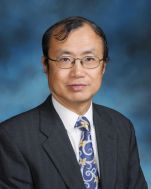 Frederick Koon-Shing Leung is a professor in mathematics education at the Faculty of Education of the University of Hong Kong. Born and raised in Hong Kong, Professor Leung obtained his B.Sc., Cert.Ed. and M.Ed. from the University of Hong Kong, and his Ph.D. from the University of London Institute of Education. Professor Leung’s area of research is in comparative studies of mathematics education, and in the influence of culture (in particular the Confucian Heritage Culture) on mathematics teaching and learning. He is principal investigator of a number of major research projects, including the Hong Kong component of the Trends in International Mathematics and Science Study (TIMSS), the TIMSS Video Study, and the Learner’s Perspective Study (LPS). Professor Leung was a member of the Executive Committee of the International Commission on Mathematical Instruction (ICMI) from 2003 to 2009, and a member of the Standing Committee of the International Association for the Evaluation of Academic Achievement (IEA) between 2007 and 2010, and he served as a consultant for a number of educational projects for the World Bank and UNESCO. Professor Leung is one of the editors for the Second and Third International Handbooks on Mathematics Education, published by Springer, and a member of the editorial boards for a number of major journals in mathematics education, including Educational Studies in Mathematics, and a member of the International Advisory Board of Journal for Research in Mathematics Education. He was appointed a Senior Fulbright Scholar in 2003, and was awarded the Hans Freudenthal Medal for 2013 by ICMI in recognition of his long time contribution to research in mathematics education. Professor Leung is currently an honorary professor of Beijing Normal University, Southwest University, and Zhejiang Normal University in China.
Frederick Koon-Shing Leung is a professor in mathematics education at the Faculty of Education of the University of Hong Kong. Born and raised in Hong Kong, Professor Leung obtained his B.Sc., Cert.Ed. and M.Ed. from the University of Hong Kong, and his Ph.D. from the University of London Institute of Education. Professor Leung’s area of research is in comparative studies of mathematics education, and in the influence of culture (in particular the Confucian Heritage Culture) on mathematics teaching and learning. He is principal investigator of a number of major research projects, including the Hong Kong component of the Trends in International Mathematics and Science Study (TIMSS), the TIMSS Video Study, and the Learner’s Perspective Study (LPS). Professor Leung was a member of the Executive Committee of the International Commission on Mathematical Instruction (ICMI) from 2003 to 2009, and a member of the Standing Committee of the International Association for the Evaluation of Academic Achievement (IEA) between 2007 and 2010, and he served as a consultant for a number of educational projects for the World Bank and UNESCO. Professor Leung is one of the editors for the Second and Third International Handbooks on Mathematics Education, published by Springer, and a member of the editorial boards for a number of major journals in mathematics education, including Educational Studies in Mathematics, and a member of the International Advisory Board of Journal for Research in Mathematics Education. He was appointed a Senior Fulbright Scholar in 2003, and was awarded the Hans Freudenthal Medal for 2013 by ICMI in recognition of his long time contribution to research in mathematics education. Professor Leung is currently an honorary professor of Beijing Normal University, Southwest University, and Zhejiang Normal University in China.
Plenary panel
Plenary Panel Discussion Session at 2014 International Conference on Mathematics Textbook Research and Development (ICMT2014)
16:30-18:00; 30 July 2014
Back to the future of textbooks in mathematics teaching
Prof. Ken Ruthven (Chair, UK)
Prof. Jere Confrey (USA)
Mr. John Ling (UK)
Prof. Binyan Xu (China)
In this 90-minute plenary session, the invited experts will draw on their extensive experience in conducting research and/or development relating to textbooks (a term which we will take as also covering cognate curriculum materials) to discuss factors and considerations which have influenced their own work on textbooks, and to offer key points of advice to the textbook developers of the future.
The session will be structured in the following way:
- Between 5 and 10 minutes each for the chair’s introductory overview, and presentations by each of the other panelists.
- At least 30 minutes of open questions and discussion, with an emphasis on ideas from the audience.
- 5 minutes for each of the panelists, and then for the chair, to make key points in response to the other presentations and the open discussion.
Introduction to the Plenary Panel Discussion Session
(Ken Ruthven)
This conference takes place during a period of considerable change in the form of textbooks and their place in mathematics teaching. Such change has arisen in response to many factors, including:
- shifts in thinking about mathematical pedagogy;
- new and multiple modalities for representing mathematics and mediating learning;
- new ideas about the use and functioning of textbooks;
- greater attention to the character and quality of interaction between teacher, student and text;
- a trend away from use of a single textbook towards combining varied resources;
- changes in the market for educational materials.
Building Digital Curriculum for Middle School using Challenges, Projects and Tools
(Jere Confrey)
In this talk, I will discuss the activity of designing digital curriculum for middle grades math. The implications of placing students into a mathematical workspace that supports collaboration, presenting, sharing, and working on dynamic tools will be the starting point. From this, I will discuss two kinds of mathematical work: engaging in mathematical projects and using challenges to spur productive struggle. For mathematical projects, I will illustrate how to use media, context, tools and presentations. For productive struggle, I will illustrate how to sequence and design challenges built around learning trajectories for major topics. In each kind of mathematical work, I will focus on what features are made possible by digital affordances of the tablet.
The School Mathematics Project: mapping its changes of direction
(John Ling)
This presentation focuses on aspects of the work of the School Mathematics Project (SMP), one of a number of initiatives originally set up in the 1960s to modernise the secondary maths curriculum and foster in students a deeper understanding of the subject. By the mid-1970s, pedagogical thinking had embraced mixed-ability classes and the SMP responded with a new set of materials designed to facilitate this in the first two secondary years. The model of individualised learning was adopted, with a pedagogy heavily influenced by research that was largely Piagetian in approach. Mathematical content was presented through concrete situations in profusely illustrated and informally written booklets. Over time the weaknesses of individualised learning became apparent and the title of the SMP’s next, and current, initiative – SMP Interact – indicates a recognition of the important element missing from the individualised approach. Two external developments had serious repercussions on this project. First, the introduction of the National Curriculum curtailed the freedom the SMP had hitherto enjoyed to decide on curriculum content. Second, examination boards began publishing their own textbooks matched to the modules of their assessment schemes. This practice has grown and makes it increasingly difficult for independent organisations to compete in the market.
Competence-oriented development of mathematics textbooks in the twenty-first century in China
(Binyan Xu)
In the twenty-first century the development of mathematics textbooks in China emphasized the cultivation of mathematical capabilities. The core capabilities, originally including operations, logical reasoning, and spatial imagination, have been extended. It highlights basic capabilities, including the sense of numbers and symbols, spatial concepts, geometric intuition, consciousness of data analysis, abilities of calculation and reasoning, and the idea of modeling. While carrying out the national project “cross-national comparison of senior high school mathematics textbooks”, we developed an analytic index framework to investigate the organization and representation of inquiry content in mathematics textbooks. The preliminary findings indicated that Chinese textbooks used in Shanghai as well as used in other provinces paid attention to designing open-ended questions and representing problems with interrogative sentences. The more concrete findings will be reported in this panel session.
The new development of mathematics textbooks in China attaches importance to the different roles of mathematics textbooks in relation to teaching and learning. From reviewing the literature and doing our own interviews with teachers, we found that teachers changed their understanding of the roles of mathematics textbooks and made efforts to put the understanding into practices. In this panel session we will discuss with you about the successes and failures in dealing with textbooks in China.
Bio sketch Professor Kenneth Ruthven
University of Cambridge, UK
 After studying mathematics at Oxford University and training as a teacher at Edinburgh University, Kenneth Ruthven taught in schools in Scotland and England and gained a PhD in education from Stirling University, before joining the Faculty of Education at the University of Cambridge. There he is Professor of Education and has served as Chair of the Science, Technology and Mathematics Education group and as Director of Research for the Faculty. His research focuses on curriculum, pedagogy and assessment, especially in school mathematics, and particularly in respect of the complex and contested process of adaptation to technological innovation. Ken(neth) is former Editor-in-Chief of Educational Studies in Mathematics, recent Chair of the British Society for Research into Learning Mathematics, current Chair of Trustees of the School Mathematics Project (SMP), and a Fellow of the Academy of Social Sciences (AcSS). Further information, recent projects and selected publications can be accessed at http://www.educ.cam.ac.uk/people/staff/ruthven/
After studying mathematics at Oxford University and training as a teacher at Edinburgh University, Kenneth Ruthven taught in schools in Scotland and England and gained a PhD in education from Stirling University, before joining the Faculty of Education at the University of Cambridge. There he is Professor of Education and has served as Chair of the Science, Technology and Mathematics Education group and as Director of Research for the Faculty. His research focuses on curriculum, pedagogy and assessment, especially in school mathematics, and particularly in respect of the complex and contested process of adaptation to technological innovation. Ken(neth) is former Editor-in-Chief of Educational Studies in Mathematics, recent Chair of the British Society for Research into Learning Mathematics, current Chair of Trustees of the School Mathematics Project (SMP), and a Fellow of the Academy of Social Sciences (AcSS). Further information, recent projects and selected publications can be accessed at http://www.educ.cam.ac.uk/people/staff/ruthven/
Bio sketch Professor Jere Confrey
North Carolina State University, USA
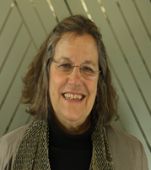 Dr. Jere Confrey is the Chief Mathematics Officer at Amplify Learning leading the development of the digital middle grades mathematics curriculum. She is on leave as the Joseph D. Moore Distinguished Professor of Mathematics Education at North Carolina State University. She served on the National Validation Committee on the Common Core Standards. She was Vice Chairman of the Mathematics Sciences Education Board, National Academy of Sciences (1998-2004). She chaired the NRC Committee, which produced On Evaluating Curricular Effectiveness, and was a coauthor of NRC’s Scientific Research in Education. She was a co-founder of the UTEACH program for Secondary Math and Science teacher preparation program at the University of Texas in Austin, and was the founder of the SummerMath program for young women at Mount Holyoke College and co-founder of SummerMath for Teachers. She is the first author of Function Probe, Precalculus Interactive Diagrams, Graphs N Glyphs and LPP-Sync software and led the development of www.turnonccmath.com, a website dedicated to unpacking the Common Core. Dr. Confrey received a Ph.D. in mathematics education from Cornell University.
Dr. Jere Confrey is the Chief Mathematics Officer at Amplify Learning leading the development of the digital middle grades mathematics curriculum. She is on leave as the Joseph D. Moore Distinguished Professor of Mathematics Education at North Carolina State University. She served on the National Validation Committee on the Common Core Standards. She was Vice Chairman of the Mathematics Sciences Education Board, National Academy of Sciences (1998-2004). She chaired the NRC Committee, which produced On Evaluating Curricular Effectiveness, and was a coauthor of NRC’s Scientific Research in Education. She was a co-founder of the UTEACH program for Secondary Math and Science teacher preparation program at the University of Texas in Austin, and was the founder of the SummerMath program for young women at Mount Holyoke College and co-founder of SummerMath for Teachers. She is the first author of Function Probe, Precalculus Interactive Diagrams, Graphs N Glyphs and LPP-Sync software and led the development of www.turnonccmath.com, a website dedicated to unpacking the Common Core. Dr. Confrey received a Ph.D. in mathematics education from Cornell University.
Bio sketch Mr. John Ling
Former School Mathematics Project, UK
 John studied mathematics at Cambridge and taught the subject in secondary schools for some years before joining the School Mathematics Project (SMP) in 1977 to lead the work on new curriculum materials for the 11–16 age range. When this project was complete he moved to Surrey Local Education Authority as County Inspector for Mathematics, a post that covered primary as well as secondary education. He returned to the SMP in 1996 to join the team working on SMP Interact, the set of textbooks that is the SMP’s current offering in the 11–16 range. He also contributed as a principal author to the SMP’s current textbooks for A level. As a Trustee of the SMP for many years he has helped in the overall guidance of the organisation’s activities. John also works as a consultant for Ofqual, the body that regulates qualifications and public examinations in England.
John studied mathematics at Cambridge and taught the subject in secondary schools for some years before joining the School Mathematics Project (SMP) in 1977 to lead the work on new curriculum materials for the 11–16 age range. When this project was complete he moved to Surrey Local Education Authority as County Inspector for Mathematics, a post that covered primary as well as secondary education. He returned to the SMP in 1996 to join the team working on SMP Interact, the set of textbooks that is the SMP’s current offering in the 11–16 range. He also contributed as a principal author to the SMP’s current textbooks for A level. As a Trustee of the SMP for many years he has helped in the overall guidance of the organisation’s activities. John also works as a consultant for Ofqual, the body that regulates qualifications and public examinations in England.
Bio sketch Professor Binyan Xu
East China Normal University, China
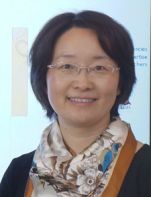 Xu Binyan holds a PhD in Science, with a major in Mathematics Education from the University of Osnabrueck, Germany (1994). She is currently a professor of mathematics education at the Institute of Curriculum and Institution of East China Normal University, of which she also serves as vice dean of the graduate school. Her research specialties are mathematics learning and teaching at primary and lower secondary level, especially from the perspective of science of learning, and design of mathematics projects on primary and lower secondary level, and international comparative study of mathematics textbooks. She is the principal investigator of the National Key Education Projects “Learning Culture within Mathematics Teaching” and “Model of Core Competencies in School Mathematics (CCSM) and its Assessment Framework”. She is the associate investigator of the third National Key Education Projects “International comparative studies on mathematics textbooks of high schools”. Her research focuses on organization and representation of core content – mathematics inquiry. She is a member of Chinese Mathematical Studies and selected as a member of Basic Education Working Group and a member of Female Mathematician Association.
Xu Binyan holds a PhD in Science, with a major in Mathematics Education from the University of Osnabrueck, Germany (1994). She is currently a professor of mathematics education at the Institute of Curriculum and Institution of East China Normal University, of which she also serves as vice dean of the graduate school. Her research specialties are mathematics learning and teaching at primary and lower secondary level, especially from the perspective of science of learning, and design of mathematics projects on primary and lower secondary level, and international comparative study of mathematics textbooks. She is the principal investigator of the National Key Education Projects “Learning Culture within Mathematics Teaching” and “Model of Core Competencies in School Mathematics (CCSM) and its Assessment Framework”. She is the associate investigator of the third National Key Education Projects “International comparative studies on mathematics textbooks of high schools”. Her research focuses on organization and representation of core content – mathematics inquiry. She is a member of Chinese Mathematical Studies and selected as a member of Basic Education Working Group and a member of Female Mathematician Association.

